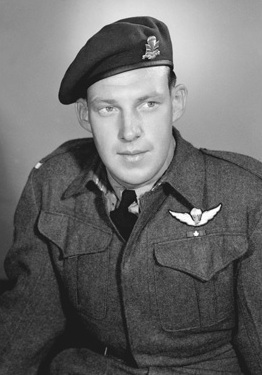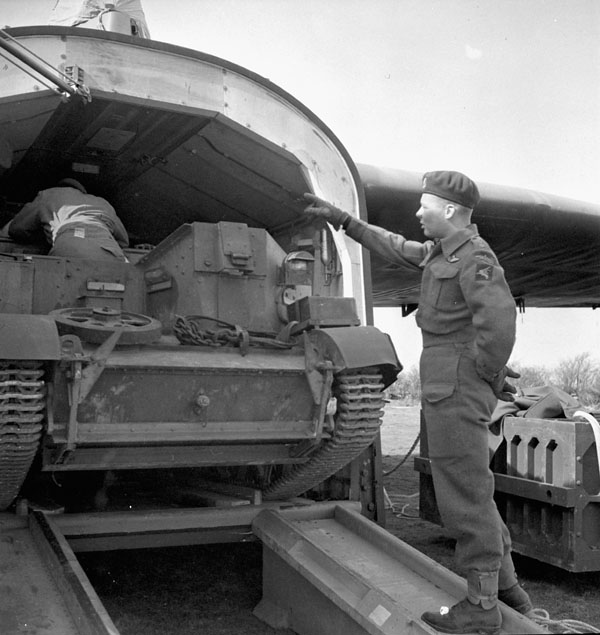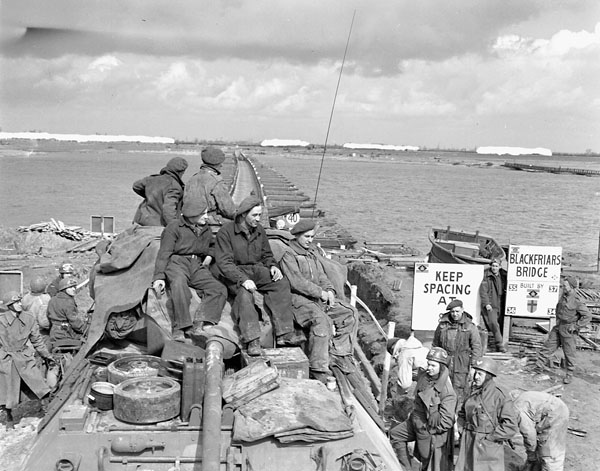Frederick George (“Toppy”) Topham, VC, miner, hydro worker, paratrooper, medical orderly (born 10 August 1917 in Toronto, ON; died 31 May 1974 in Toronto). Topham was a medical orderly with the 1st Canadian Parachute Battalion in March 1945 during Operation Varsity, the last major Allied airborne assault of the Second World War. (See Canada and the Rhineland Offensive.) Topham was awarded the Victoria Cross for his devotion to duty in attending to the wounded for six hours under fire, while wounded himself.

Early Life and Education
Fred Topham was the son of Henry Ashmore and Margaret Jane Topham. He attended King George Public School and Runnymede High School in Toronto. When he finished his schooling, Topham worked at several jobs, including hard-rock miner, rubber worker and sawmill employee.
Second World War
When the Second World War began, Fred Topham initially enrolled in Toronto’s 48th Highlanders, an infantry unit. He was only there for 30 days, however, before he transferred to the Army Service Corps as a medical orderly. Because Topham was strong and athletic, it was suggested he join 1st Canadian Parachute Battalion. The battalion was Canada’s only parachute unit of the war and was being formed at the time.
Parachute training facilities did not yet exist in Canada, so initial jump training took place at Fort Benning, Georgia. When it was completed on 22 March 1943, the unit proceeded to the new Parachute Training Wing at Camp Shilo, Manitoba. In July, the battalion sailed to Britain and moved to Bulford Camp.
The Canadian unit became one of three battalions in 3rd Parachute Brigade, 6th Airborne Division. The battalions trained in British parachute methods and prepared for D-Day. As 6 June 1944 approached, Topham, now a corporal, became ill and could not jump with his unit into Normandy. After recovering, he sailed to France to rejoin the battalion before the entire unit returned to Britain to prepare for its next mission.
Rhineland Offensive
On 8 March 1945, First Canadian Army reached the Rhine River. (See Canada and the Rhineland Offensive.) The Allies now had to cross the last major obstacle to their advance into Germany. Canadian soldiers were not initially included in the planned assault, but Canadian commander General Harry Crerar argued that his men deserved to be included. Field Marshal Bernard Montgomery therefore attached II Canadian Corps to Second British Army.
On the night of 23 March, British units crossed the Rhine in Buffalo amphibious vehicles. They encountered stiff opposition on the far side but were helped by units of 9th Canadian Infantry Brigade that crossed in Buffaloes early the next day.

Operation Varsity
Operation Varsity was launched at 10.00 a.m. on 24 March. About 14,000 paratroopers of the 6th British and 17th US Airborne Divisions jumped east of the Rhine in the largest single-day airborne drop in history. Their mission was to capture important terrain to assist the advance of ground troops. The 475 men of the Canadian battalion landed north of Diersfordt Wood, spread over a wide area.
Fred Topham landed at about 11:00 a.m. and immediately began treating casualties who had been injured in the drop. He then heard a cry for help from a wounded soldier who was in an open area and exposed to enemy fire. When a medical orderly from a field ambulance unit tried to treat him, he was killed as he knelt beside the wounded man. A second orderly tried again but was also killed. On his own initiative, Topham ran through intensive fire to assist the man.
As he treated the wounded paratrooper, Topham was shot through the nose. Despite severe pain and profuse bleeding, he continued to administer first aid. Topham then carried the casualty to the shelter of a nearby wood, still under continuous fire.
Topham refused treatment for his wound as he continued to assist other injured soldiers. Two hours later, when all casualties had been safely evacuated, he finally allowed his nose wound to be dressed. Topham was then ordered to be evacuated with the other wounded, but he protested so strongly that he was allowed to stay.
On his way to rejoin his company, Topham came across an ammunition carrier that had received a direct hit and was burning fiercely. Enemy mortar rounds were still dropping in the area and the carrier’s own mortar ammunition was exploding. An officer warned everyone to stay back and not go near the vehicle.
Despite the perilous situation, Topham immediately went out alone, despite enemy fire and exploding ammunition. He rescued three soldiers from the carrier and brought them across open ground to safety. Although one of the soldiers died immediately afterward, Topham arranged the evacuation of the other two.
Topham was awarded the Victoria Cross for his courageous conduct in assisting wounded soldiers during a six-hour period, most of the time in great pain himself. As his unit was the first to return to Canada after the war, Topham did not receive his medal from the king. Instead, it was sent to him by registered mail in 1946.
Postwar
On 8 August 1945, Fred Topham’s heroism was acknowledged with a parade and civic reception in Toronto at which 100 members of his battalion provided a guard of honour. On 10 November, he laid the cornerstone for the new Sunnybrook Memorial Hospital for Veterans. Topham did not, however, participate otherwise in military matters.
Topham served briefly as a constable with the Toronto Police Department before he moved to Toronto Hydro. He died from a heart attack in 1974 following an accidental electrocution at work and was buried in Sanctuary Park Cemetery. His wife, Mary, who died in 2001, was buried beside him.
Memory
Memorial plaques in Fred Topham’s name were erected in Toronto at the Etobicoke Old Town Hall, Runnymede Collegiate Institute, Topham Park and Sanctuary Park Cemetery. Topham Street in Edmonton, Alberta, was named after him in January 2005.
Topham’s Victoria Cross and his other medals were acquired for $300,000 through a public fundraising project and presented to the Canadian War Museum in March 2005.

 Share on Facebook
Share on Facebook Share on X
Share on X Share by Email
Share by Email Share on Google Classroom
Share on Google Classroom






